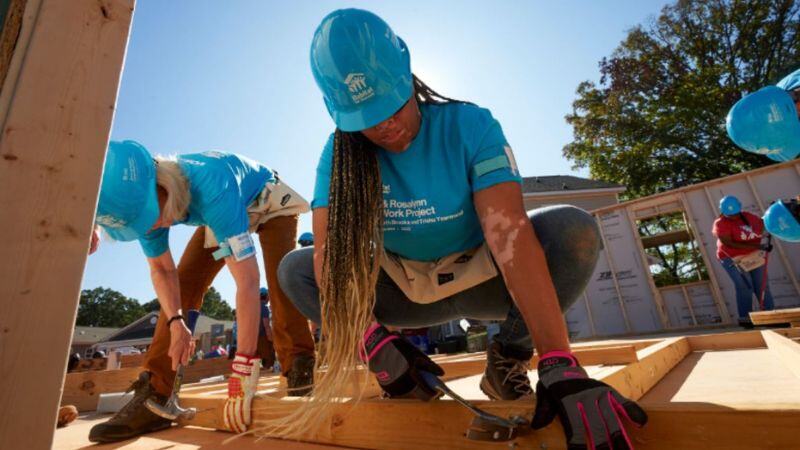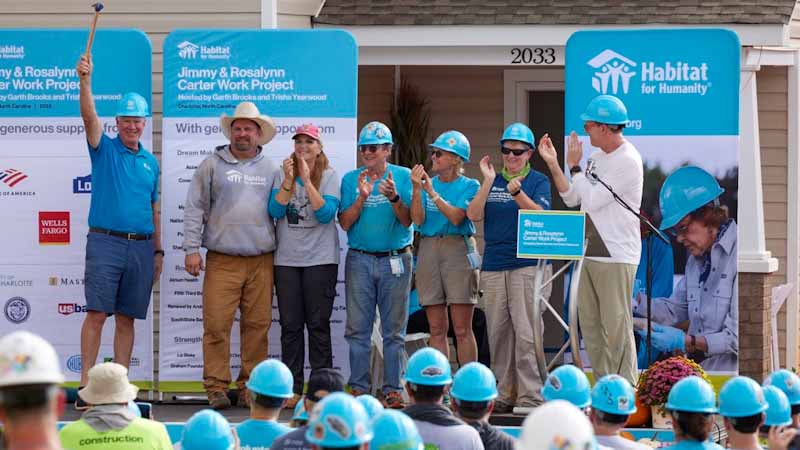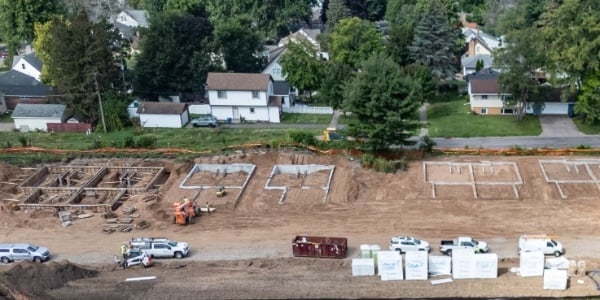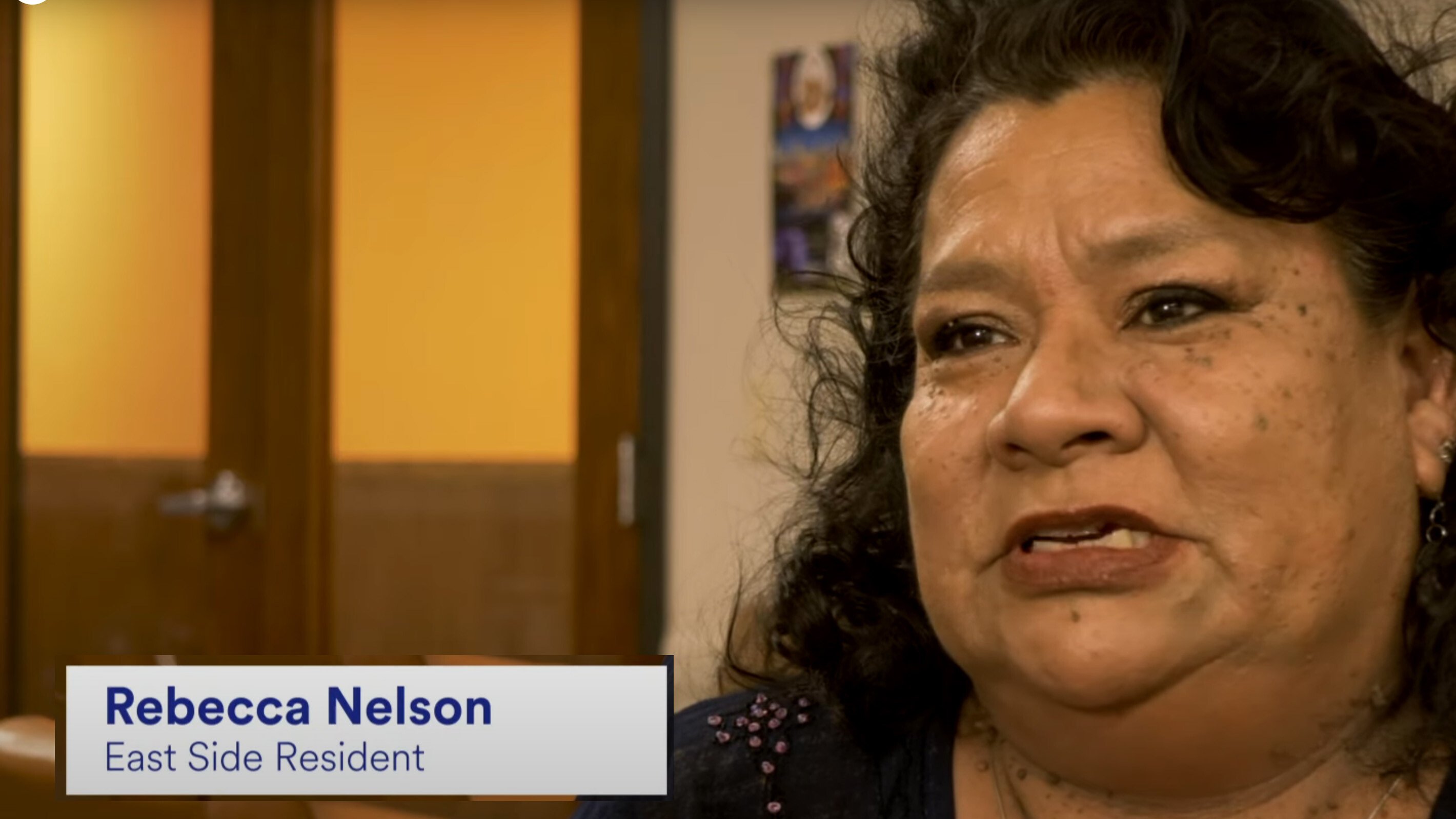100 Days until Carter Work Project: 100 Reasons to Get Excited
Get excited! The Opening Ceremony for the 2024 Jimmy & Rosalynn Carter Work Project is just 100 days away. We couldn’t be more honored and thrilled...
5 min read
Aaron Lichtov
:
2:46 PM on September 6, 2024

Our work has always been grounded in our values: community, equity, innovation. Hosting the 2024 Jimmy and Rosalynn Carter Work Project has given us the opportunity to think even more broadly and strategically about the impact of our choices and how we do our work. We’ve spent a full year since the ceremonial hammer was passed to us as the next hosts, and 18 months since we were announced as a development partner at The Heights, planning every possible detail of this “Super Bowl of Habitat” to ensure a positive experience for everyone from volunteers to our new neighbors on the Greater East Side.
Twin Cities Habitat’s Chief Program Officer Shereese Turner remembers the moment we were selected as a development partner at The Heights. “I knew we needed to be intentional in how we approach this. How can we go into a community and not have a relationship with them? We’re going to be your neighbors for a long time, which means that we need to show up neighborly.”
The very week that the partnership was announced, Shereese got a call from Lisa Theis, Executive Director of the Greater East Side Neighborhood Council. “The first thing we talked about was ‘How do we bring the Greater East Side to the Carter Work Project?’” Since then, Shereese and her team have been getting to know the neighborhood through Lisa and the Council, introducing Habitat to the neighborhood and building relationships across the Greater East Side. Shereese is quick to credit Lisa’s leadership in building those relationships. “She’s respected and trusted; we followed her guidance in the spaces she introduced us to, letting her engage folks before we come in and say ‘Okay here’s what we’re going to do,’ asking questions before we make assumptions."
This past spring, our Land Development Director Chad Dipman was a guest on the Council’s podcast, introducing Habitat’s work and Twin Cities Habitat’s history to the neighborhood. Chad explained how we approach development and how prospective homebuyers get involved with our program.
On September 12 from 6:00 to 8:00 p.m., Twin Cities Habitat is hosting an open house-style block party at the Hayden Heights Rec Center (Somali and Hmong interpreters will be on site). The whole neighborhood is invited to meet Habitat staff, learn about the development, get acquainted with our work, and enjoy music, games, and refreshments. The block party is also an opportunity for residents to ask questions about the Carter Work Project and our continued work at The Heights.
We’re mindful of and sensitive to the disruption that a long-term development like this can bring to a neighborhood. We want to answer any questions or concerns that people have about it. As Shereese says, “We want to meet you because we’re going to be here for a long time. I’m excited about the Heights, sure, but I’m equally excited about the relationships we’re going to be building and everything we’re going to be learning, for all the possibilities.”

We’re also inviting East Siders to see The Heights development by volunteering during the Carter Work Project. Residents can email Lisa Theis or go to the Greater East Side website to learn more about those opportunities. Current Habitat homeowners on the East Side are participating as site volunteers and speakers, so prospective homebuyers can connect with The Heights and with Twin Cities Habitat through existing relationships with their neighbors. They are being compensated for their time with honoraria.
Inclusivity, Shereese says, “can happen organically when you have parties that recognize the value of working alongside community. It’s an example of how we should be showing up for future projects. This is how we’re supposed to do it.”
Making the Carter Work Project experience accessible to as many people as possible has also been a priority. Every volunteer who registers for the project is invited to share their accommodation needs with us, and we’ve planned our public events to have built-in accessibility in a variety of ways.
The Opening and Closing Ceremonies and the Build Forward Bash will all have:
At the build site, we will have water bottle refill stations in multiple locations, shaded rest areas, and a comfort trailer (donated by Ryan Companies) for nursing parents. We will also have an ADA-compliant restroom trailer with a ground-level entrance. On Habitat’s portion of the build site, we’ll be putting in a temporary paved road to facilitate internal transportation. Though an active construction site is not notably an accessible space, we are keeping accessibility in mind as we’re planning and making every part of the build week as accessible as possible. If you’re planning to attend an event or have signed up to volunteer and have additional questions about your personal accessibility, please contact us at events@tchabitat.org.
Environmental sustainability is a priority for our construction materials and processes. Pete Kennelly, one of Twin Cities Habitat’s Warehouse Managers, says that source reduction and recycling are “standard operating procedure and best practice” at all of our build sites and warehouses. Given the sheer size of our build site at The Heights and the hundreds of volunteers who will be there for the Carter Work Project, we have a unique opportunity to both make an environmental impact at scale and set a new benchmark going forward for how sustainable our work can be, from the process to the end product.
We’ve engaged the Vanella Group to provide receptacles for trash, recycling, and organic waste along with signage and support staff throughout the site. All waste, including construction waste, will be conveyed to dumpsters to maintain separate waste streams.
We’re reducing our waste generation at the source by using compostable plates and flatware. A generous donor is providing stainless steel refillable water bottles for every volunteer. We have asked our catering partner Chef Jeff to avoid individually packaged items wherever possible. Chef Jeff also has a food rescue plan: after each meal service on site, their team will connect with local partners to arrange distribution of any leftover food to one of their local food shelf partners.
At the warehouse near the build site, our team has been receiving massive quantities of equipment and materials:
 Almost everything comes individually packaged, “cardboard upon cardboard upon cardboard.” In the past month, Pete estimates that volunteers have put in about 900 hours just unpackaging individual items. They’re separating cardboard backing from molded #5 plastic and recycling both. “People are really cognizant of milk jugs and water bottles and cardboard, but almost everything is wrapped in plastic and a lot of times that just ends up in the garbage.”
Almost everything comes individually packaged, “cardboard upon cardboard upon cardboard.” In the past month, Pete estimates that volunteers have put in about 900 hours just unpackaging individual items. They’re separating cardboard backing from molded #5 plastic and recycling both. “People are really cognizant of milk jugs and water bottles and cardboard, but almost everything is wrapped in plastic and a lot of times that just ends up in the garbage.”
While that’s happening, the warehouse team has built wooden gaylords that will be filled with the power tools and hand tools for each build site. At the end of the Carter Work Project, those gaylords will come back to the warehouse and the lumber will be re-used.
The team also submitted a proposal to DeWalt highlighting the sustainability of the overall project, which resulted in an in-kind donation of tools valued at $100,000.

All of these efforts are ways that Twin Cities Habitat strives to make a positive impact on our community. The sheer volume of volunteers and materials coming together for the Carter Work Project build week has pushed us to be even more creative, innovative, and ambitious in our approach. We're exhilarated by the challenge and look forward to taking what we've learned into our everyday practice after the hammer is passed to next year's Carter Work Project hosts.
Your gift unlocks bright futures! Donate now to create, preserve, and promote affordable homeownership in the Twin Cities.

Get excited! The Opening Ceremony for the 2024 Jimmy & Rosalynn Carter Work Project is just 100 days away. We couldn’t be more honored and thrilled...

Soon 4,000 volunteers will gather in the Twin Cities for the 2024 Jimmy & Rosalynn Carter Work Project! From September 29 to October 4, this weeklong...

Since 1985, Twin Cities Habitat for Humanity has partnered with more than 1,800 homeowners in 100 cities all across the metro area. But this summer...